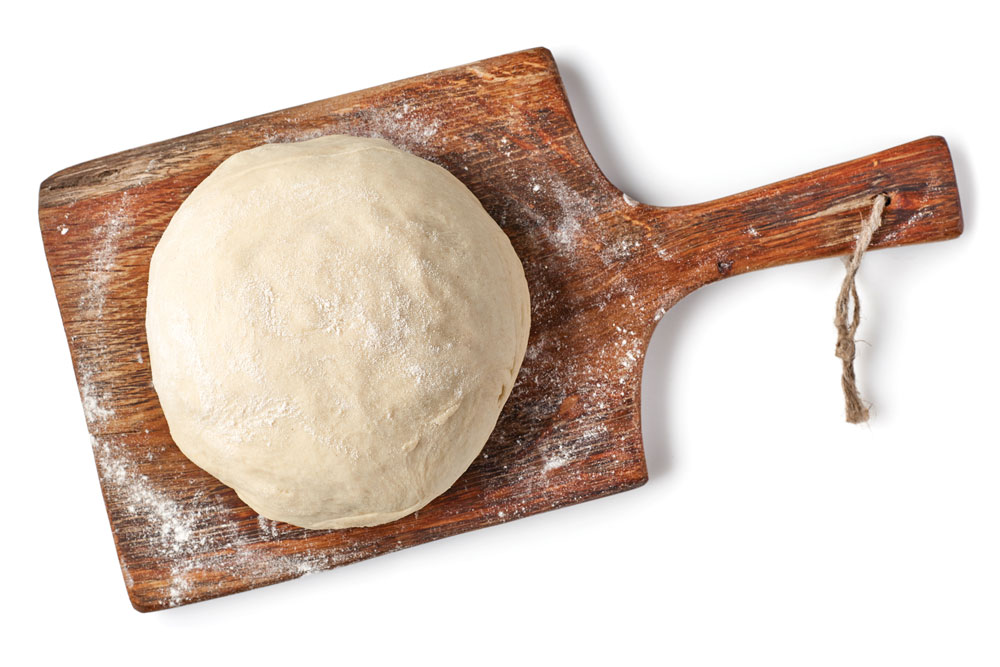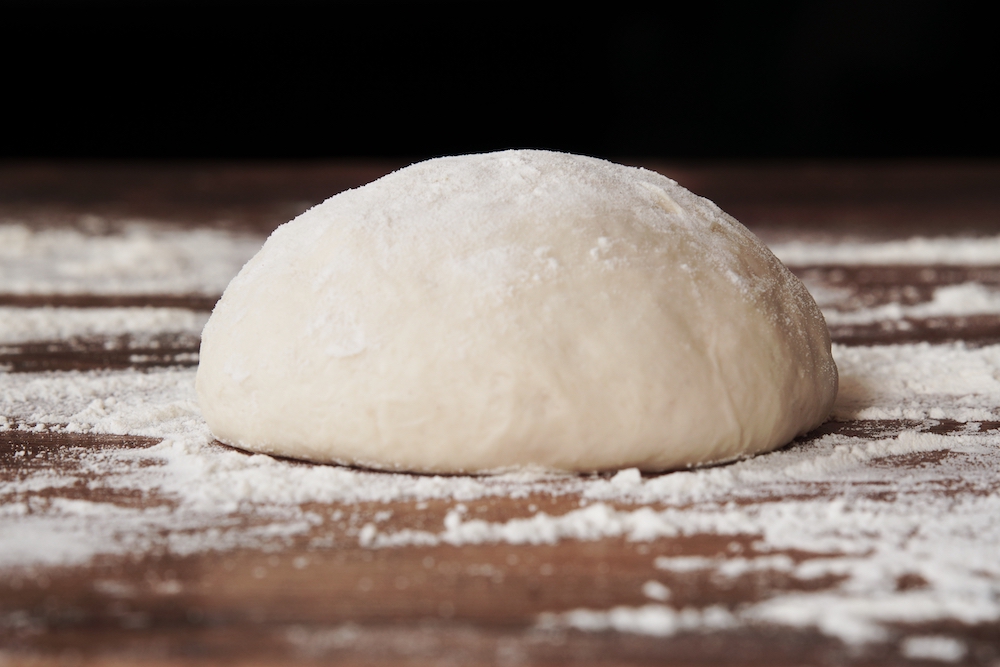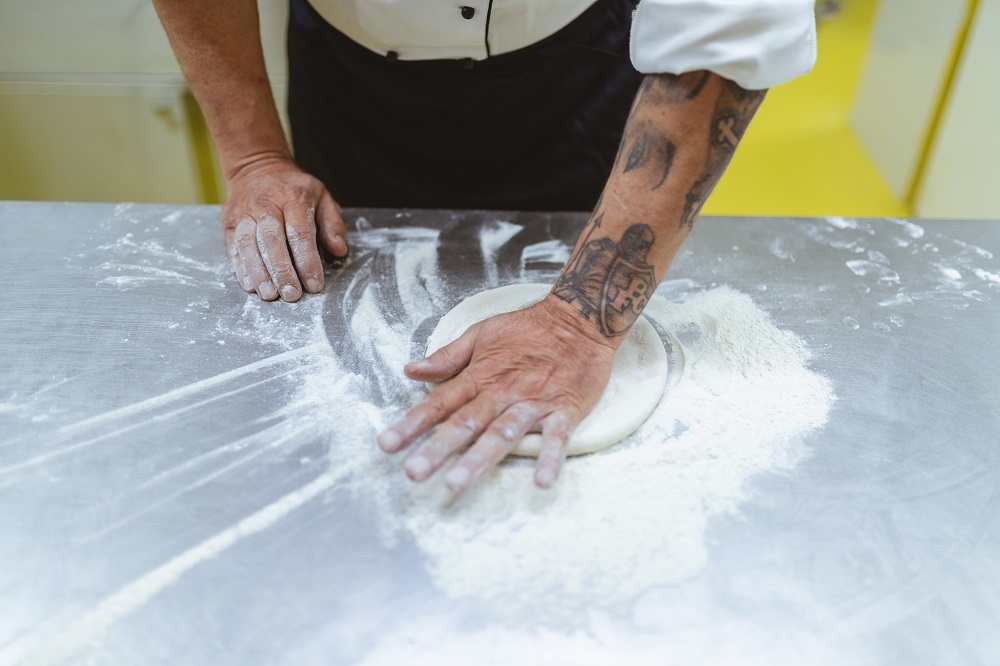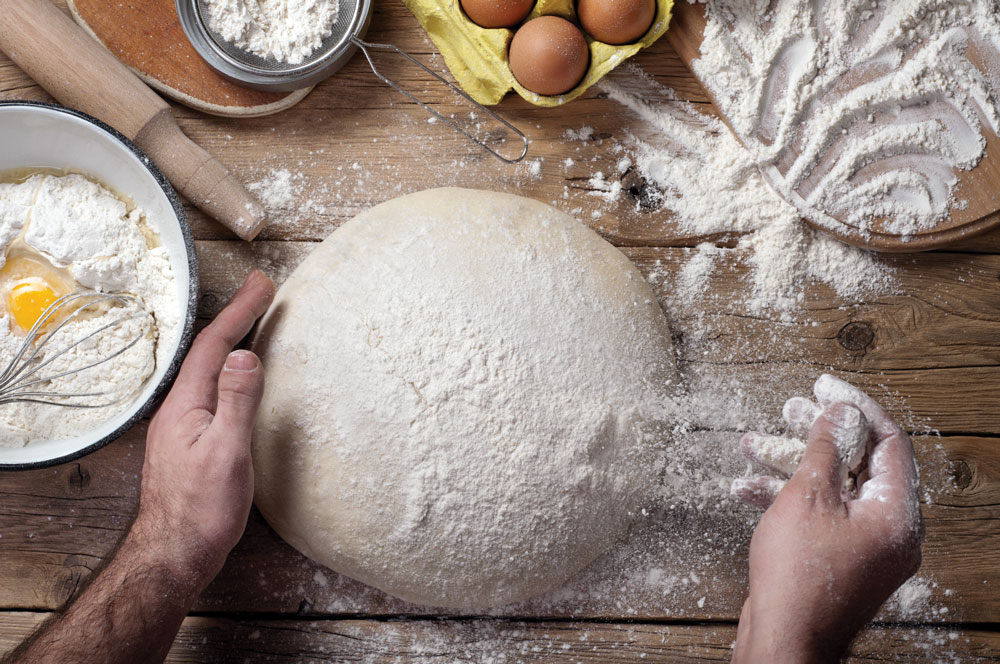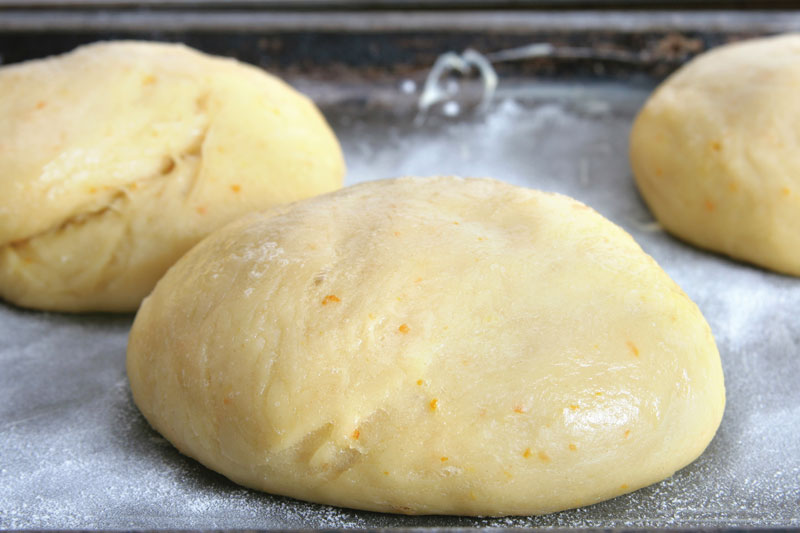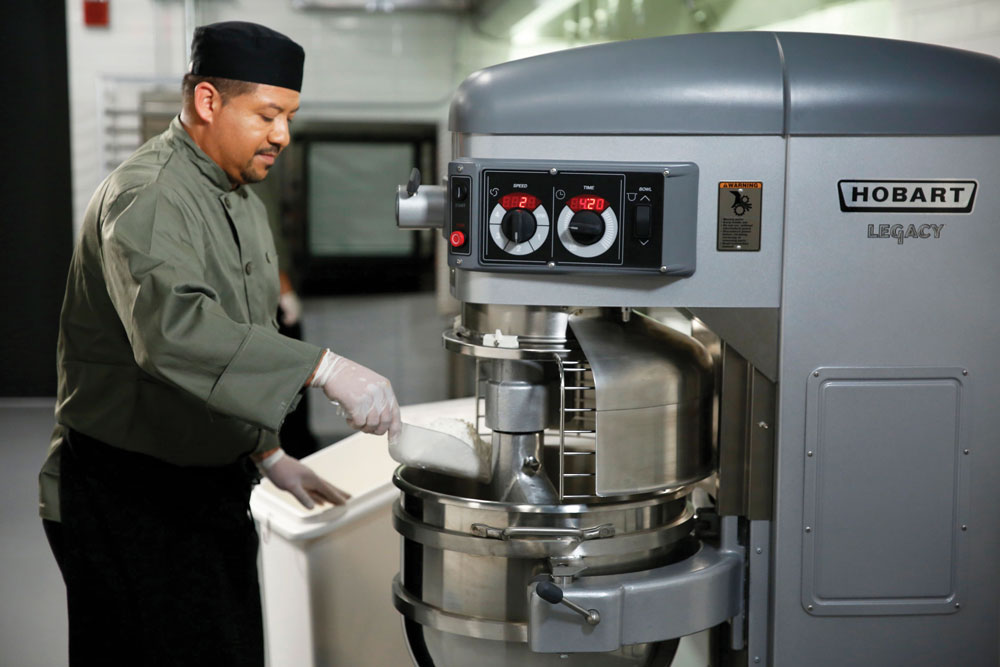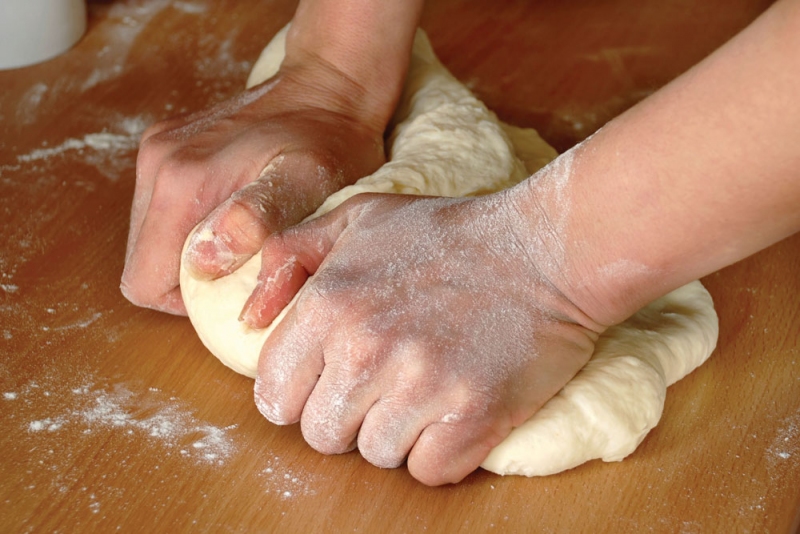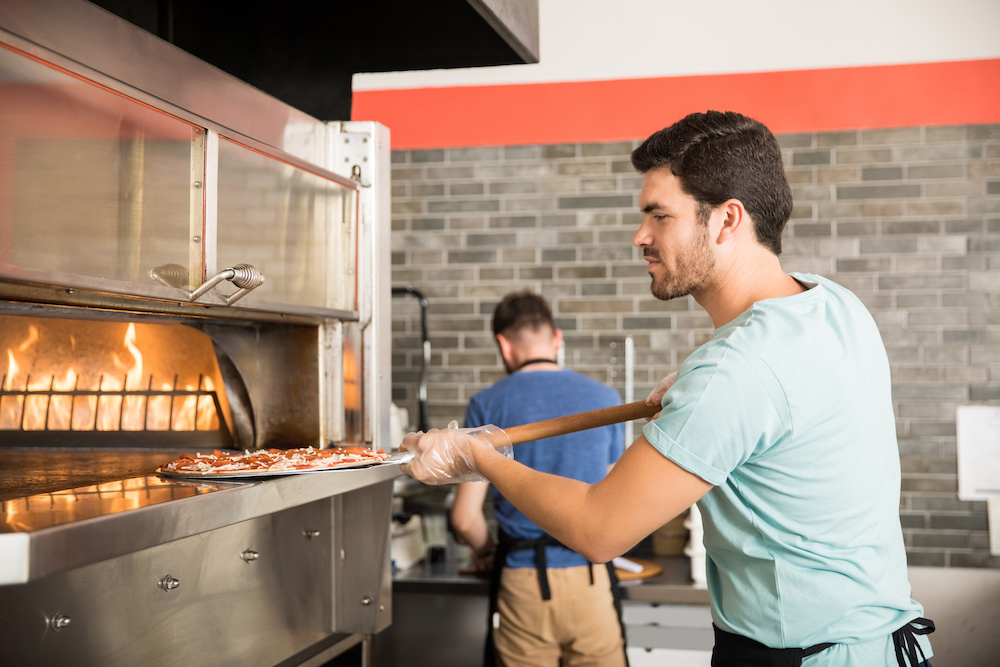Q: What should the temperature of my dough be when I start opening it into skins?
A: As we all know, pizza dough becomes noticeably firmer and harder when it’s cold, so we allow it to warm a little after removing it from the cooler. In most cases, we can simply let it warm for a certain period of time. However, variations in dough formulations, shop conditions, and dough opening practices all come into play here, so it’s best to start by learning how long it takes for your dough ball to warm up sufficiently.
To start, measure the internal temperature of the dough as soon as you remove it from the cooler—it will usually be at 40°F or lower. I recommend allowing the dough balls to warm to an internal temperature of 50°F before opening them into skins; this will give you a usable window of 2.5 to 3 hours for the dough balls (just remember to keep them covered).
Once you’ve first measured the dough ball’s internal temperature, make a note of the time. When the ball’s temperature has warmed to 50°F, note how much time has elapsed since the first measurement. This will tell you how long to wait after removing the dough from the cooler before opening it in the future.
Unusually cold shop conditions might dictate a higher internal dough temperature before opening. A warmer shop will not usually benefit from a colder opening temperature, but you will have less time for using the dough balls in warmer conditions, so keep this in mind when pulling dough balls from the cooler; too many dough balls sitting out in a warm or hot shop will end up overfermenting, creating more problems.
If you want to work with the dough as quickly as possible after removing it from the cooler, I suggest preopening the dough balls early in the day and placing them back into the cooler on screens or trays in a wire tree rack (covered) for use later in the day. Simply allow the skins to temper at room temperature for about 15 minutes, then clean them up by restretching to full diameter, and you’re ready to dress and bake the pizzas. (This is also an excellent way to manage the dough under extremely warm shop conditions, or if you lack sufficient space to store the dough outside of the cooler.)
Tom Lehmann was the longtime director of bakery assistance for the American Institute of Baking and is now a pizza industry consultant.

